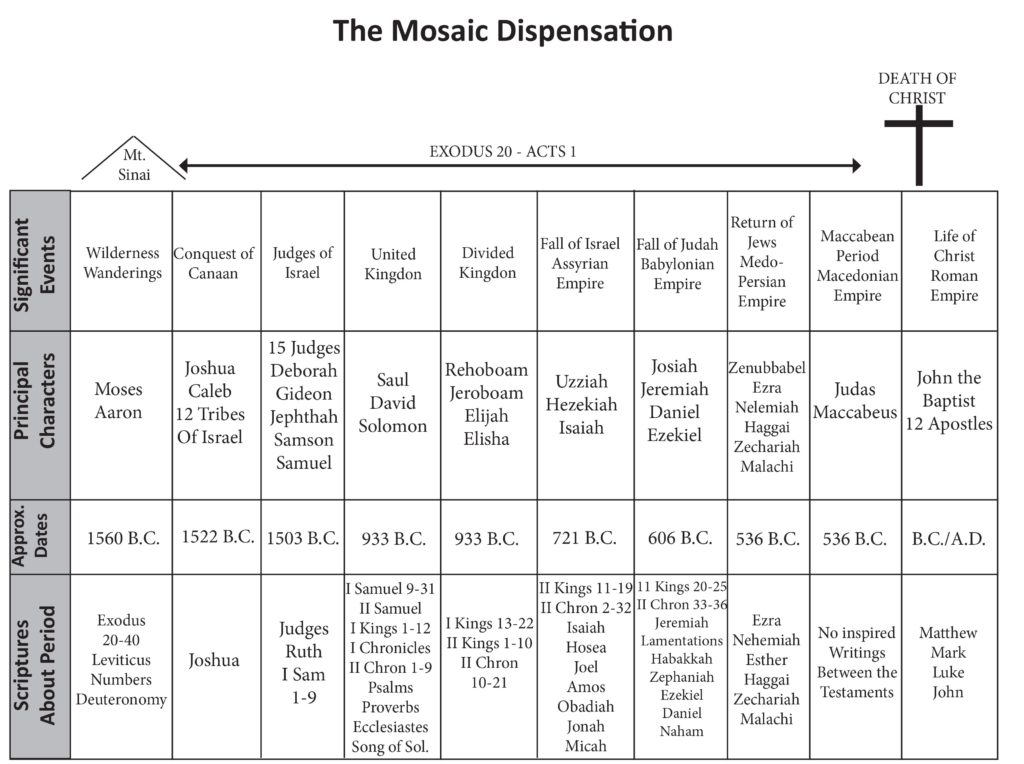The Mosaic Period – Chronological Dispensation
III. Chronological Events of the Mosaic Dispensation
A. Forty Years In Wilderness Because Of Unbelief, Numbers 13;14; Deut. 1.
- Israel murmured and complained; lacked faith, Heb. 3:12-19.
- Joshua led the Israelites after the death of Moses, Deut. 1:35-39.
B. Conquest of Canaan
- Under the leadership of Joshua the Israelites gained the land promised to Abraham, Gen. 12:1.
- Received all the land God had promised them, Josh. 21:43-45; 23:14; 1 Kings 4:21.
C. Period of the Judges
- Fifteen judges ruled over a span of 450 years, Acts 13:20.
- The most familiar names are Deborah, Gideon, Samson, and Samuel, Heb. 11:32.
D. The United Kingdom
- Saul, David, and Solomon reigned forty years each.
- Israel reached its greatest strength during this period, 1 Kings 10:1-7.
E. The Divided Kingdom
- Upon the death of Solomon Israel became a divided nation. The ten Northern tribes led by Jeroboam and the two Southern tribes led by Rehoboam were separated.
- The Northern Kingdom (Israel) was taken captive by Assyrians in 721 B.C.
- The Southern Kingdom (Judah) was overthrown by Babylonians in 606 B.C.
F. The Age of the Prophets (The fall of the nation and prophecies of Christ).
- During the decline of the nation, the captivity, and the return to Jerusalem God spoke through the prophets.
- Their mission was to try to save the nation from its idolatry and wickedness; failing in this, they announced the nation’s destruction. However, they foretold that a remnant would be spared.
- Out of this remnant would come the Promised Seed of Abraham (Christ), who would bring all nations to God.
G. Return From Captivity
- The first remnant of Israelites was led back to Jerusalem under the guidance of Zerubbabel who started them rebuilding the temple in 536 B.C.
- The second remnant was led by Ezra, who helped to reorganize and re-establish the nation, in 457 B.C.
- The third remnant was led by Nehemiah who directed the rebuilding of the wall about the city of Jerusalem in 444 B.C.

